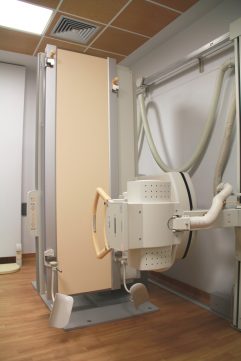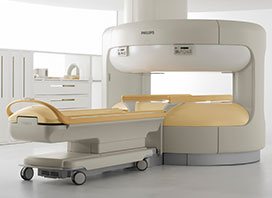CLASSICAL RADIOLOGY

The following examinations are performed in the laboratory:
• Chest x-ray
• Bone x-ray
• Stomach and bowel examinations
• Pyelography
• Cystography
• Hysterosalpingography
Hysterosalpingography
Hysterosalpingography is an x-ray of the uterus and the fallopian tubes. This method is an important part of the research for infertility problems. In 30% of cases, the problem is obstruction of ovum or sperm from traveling through the fallopian tube.
In hysterosalpingography, a radio-opaque material is administered through a catheter inserted transvaginally into the cervix. The contrast medium fills the fallopian tubes through the uterus, while the x-rays are taken. Therefore, any damage or obstruction is visible. In certain cases, the contrast medium may act therapeutically by moving or clearing away the reason of obstruction.
Hysterosalpingography is ideally performed either the first days of a woman’s menstrual cycle or as soon as menstruation ends or before ovulation (possible day of conception).
This method creates no problems for the majority of patients. However, some women may experience some cramping after the infusion. Some doctors recommend NSAIDs (Voltaren, Mesulid, Naprosyn, Ponstan, etc.) to patients, half an hour and up to two hours before salpingography. Another problem that may rarely occur (<1%) is pelvic infection. In case a woman has a history of pelvic infections, ectopic pregnancies, fallopian tube surgeries or appendiceal orifice, then pelvic infection rate increases at 4% and your gynecologist may prescribe you an antibiotic.
Hysterosalpingography findings are very important as they shall determine the gynecologist’s options to treat the problem either with an interventional procedure or by by-passing the obstruction (e.g. in vitro fertilization).


















